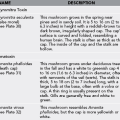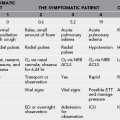High-Altitude Medicine
High-Altitude Illness
Treatment
1. Oxygen beginning at low flow rates (0.5 to 2 L/min by nasal cannula to raise arterial oxygen saturation to greater than 90%) is usually very effective if available.
2. Nonsteroidal antiinflammatory drugs (NSAIDs), such as ibuprofen 400 mg q8h, acetaminophen 500 mg q4h, or both, are generally effective. Avoid narcotics because they may suppress ventilation and predispose to AMS. AMS treatment agents, such as acetazolamide and dexamethasone (see later), may be used to prevent or treat high-altitude headache.
Acute Mountain Sickness
AMS can be quantified by using the Lake Louise score (LLS)—see Appendix D.
Natural Course
1. Natural course is highly variable.
2. Symptoms may start within 2 hours after arrival at altitude.
3. Symptoms rarely start after 48 hours at a given altitude.
4. Most AMS resolves within 3 days.
5. Some patients worsen despite remaining at a fixed altitude (for example, nausea and headache do not resolve with rest or the symptoms worsen in intensity without progressing to HACE).
Treatment (Box 1-1)
1. Do not proceed to a higher sleeping altitude unless/until all symptoms completely resolve.
2. Monitor the patient for progression of illness (to pulmonary or cerebral edema).
3. If symptoms worsen despite an additional 24 hours of acclimatization at the same altitude, descend. Descent of 500 to 1000 m (1640 to 3281 ft) is often sufficient to achieve clinical improvement and resolution of symptoms.
4. Immediately descend if the patient suffers ataxia, altered consciousness, or pulmonary edema.
5. For mild AMS, halt the ascent and wait (12 hours to 3 days) for acclimatization to occur. Administer acetazolamide, 250 mg PO bid (pediatric dose: 2.5 mg/kg/dose bid to a maximum dose of 250 mg) for 2 days while at altitude or until symptoms have diminished.
6. Oxygen beginning at low flow rates (0.5 to 2 L/min by nasal cannula to raise arterial oxygen saturation to greater than 90%) is usually very effective if available.
7. Ginkgo biloba 100 mg PO bid started 5 days before ascent has been shown in some studies to prevent and reduce symptoms of AMS, but some reports indicate that gingko is a less reliable prophylactic drug than acetazolamide.
8. Administer aspirin, 650 mg; acetaminophen, 650 mg; or ibuprofen, 400 to 600 mg PO for headache.
9. Administer an antiemetic (e.g., ondansetron, prochlorperazine, promethazine, metoclopramide) for nausea and vomiting.
10. Avoid sedative-hypnotic drugs and alcohol.
12. Consider promptly descending 500 to 1000 m (1640 to 3281 ft) if medications are ineffective or unavailable, or illness is severe.
13. If readily available and in unlimited supply, consider administering oxygen 0.5 to 1.5 L/min by nasal cannula or simple (open type) face mask during sleep. This is particularly effective for headache.
14. Consider administering dexamethasone 8 mg PO/IM/IV, then 4 mg q6h (pediatric dose: 0.15 mg/kg/dose q6h to a maximum dose of 4 mg) in conjunction with descent, for progressive neurologic symptoms or ataxia, or if the patient cannot tolerate acetazolamide. Even if symptoms resolve with use of dexamethasone, it is unwise to remain at high altitude or to ascend while taking dexamethasone, because signs of progression to HACE could be masked.
15. Consider undertaking a 2- to 6-hour treatment in a portable hyperbaric bag (e.g., Gamow Bag) inflated to 2 psi. Maintaining 2 psi inside the bag is equivalent to a descent of 1000 to 3000 m (3281 to 9843 ft) depending on the starting altitude. The hyperbaric bag can be used with or without supplemental oxygen. Most portable bags require constant pumping, so recruit additional persons for assistance (see Box 1-1).
High-Altitude Cerebral Edema
Treatment
1. Immediately descend at least 500 to 1000 m (1640 to 3281 ft) or more. There is no upper limit to descent rate or distance. For example, if a person is able to descend rapidly to sea level, this is preferred.
2. Administer dexamethasone 8 mg IV, IM, or PO, followed by 4 mg q6h (pediatric dose: 0.15 mg/kg/dose q6h to a maximum dose of 4 mg).
3. Administer oxygen 2 to 4 L/min by nasal cannula or simple (open type) face mask, to maintain SaO2 greater than 90%. Higher O2 concentrations and a nonrebreather mask may be required.
4. If the patient is comatose, manage the airway and drain the bladder.
5. Only after descent or if descent is not feasible, consider undertaking a 2- to 6-hour treatment in a portable hyperbaric bag (e.g., Gamow Bag) inflated to 2 psi. Maintaining 2 psi inside the bag is equivalent to a descent of 1000 to 3000 m (3281 to 9843 ft) depending on the starting altitude. The hyperbaric bag can be used with or without supplemental oxygen. Most portable bags require constant pumping, so recruit additional persons for assistance (see Box 1-1).
6. If neurologic symptoms persist despite treatment with oxygen, steroids, and descent, a cerebrovascular accident may be present. Evacuate for definitive evaluation and care.
High-Altitude Pulmonary Edema
1. Decreased exercise performance and increased recovery time
2. Dyspnea on exertion that progresses to dyspnea at rest
3. Cough (mild and dry initially, becoming productive late in the disease)
4. Tachycardia and tachypnea at rest
5. Fatigue, weakness, and lassitude
7. Symptoms of AMS occur in about 50% of cases
8. Cyanotic nail beds and lips
9. Audible chest rales, classically beginning in the right middle lobe (auscultate right lateral chest between fourth and sixth intercostal spaces) and becoming bilateral and diffuse
10. Pink or blood-tinged sputum (late finding)
11. Mental status changes, ataxia, decreased level of consciousness, and coma may signify extreme hypoxemia or signal coexisting HACE
12. Hypoxemia determined by pulse oximetry. It is difficult to precisely define a “normal” pulse oximetry reading at high altitude. Because variables are constant for traveling companions on the same itinerary, one strategy is to average the readings among well companions and consider substantially lower readings (10% or more) in persons who are unwell as tantamount to hypoxemia.
Treatment
1. Immediately descend at least 500 to 1000 m (1640 to 3281 ft).
2. Administer oxygen 2 to 4 L/min by nasal cannula or simple (open type) face mask to maintain SaO2 greater than or equal to 90%. Higher O2 concentrations and a nonrebreather mask may be required.
3. If supplemental oxygen is not available, consider giving nifedipine 20 mg sustained-release capsule q8h or 30-mg sustained-release capsule q12h to reduce pulmonary arterial pressure.
5. Consider using pursed-lip breathing or continuous positive airway pressure (CPAP) delivered by face mask.
6. Consider undertaking a 2- to 6-hour treatment in a portable hyperbaric bag (e.g., Gamow Bag) inflated to 2 psi. Maintaining 2 psi inside the bag is equivalent to a descent of 1000 to 3000 m (3281 to 9843 ft) depending on the starting altitude. The hyperbaric bag can be used with or without supplemental oxygen. Most portable bags require constant pumping, so recruit additional persons for assistance (see Box 1-1).
7. Consider a phosphodiesterase-5 (PDE-5) inhibitor, such as sildenafil 50 mg q8h or tadalafil 10 mg q12h. This recommendation is not yet well studied for treatment but is effective for prevention, discussed next.
8. Consider dexamethasone 8 mg q12h, which is not yet studied for treatment, but has been shown effective for prevention and may treat coexisting HACE.
Other Altitude Disorders
Periodic Breathing
Treatment of Sleep Disturbances and Periodic Breathing
1. Administer acetazolamide 62.5 mg to 125 mg PO in the evening.
2. Use sedative-hypnotic sleep aids cautiously (especially in patients with altitude sickness) because of the potential for respiratory depression.
3. If acetazolamide is not effective or unable to be used, consider the PO use of eszopiclone 1 to 3 mg, or zolpidem 5 to 10 mg.
Peripheral Edema
High-Altitude Retinal Hemorrhages
Focal Neurologic Conditions Without Cerebral Edema
Treatment
2. Supplemental oxygen to maintain pulse oximetry saturation at approximately 90% to 94%
4. Steroids may be effective for treatment of possible underlying HACE
5. Patients with signs and symptoms of TIA (fluctuating or resolving neurologic symptoms that are not consistent with the presence of a hemorrhagic stroke) at high altitude may benefit from administration of aspirin, but a risk assessment (considering time to advanced imaging, which would exclude hemorrhage that could be worsened by aspirin administration) should be taken into consideration. For instance, a patient with a presentation classic for TIA or embolic stroke who is hours from imaging might tip the risk/benefit ratio in favor of administration of 325 mg aspirin PO, but a patient with a presentation that could be consistent with hemorrhage might be considered higher risk; therefore, waiting to administer aspirin until imaging makes the diagnosis clear would be the wiser course of action.
Ultraviolet Keratitis (“Snowblindness”)
Treatment
1. Remove contact lenses and do not reinsert these until all symptoms have resolved.
2. Use a topical anesthetic (e.g., tetracaine ophthalmic 0.5%, 1 to 2 drops) for evaluation but do not use repetitively (inhibits corneal reepithelialization).
3. Administer aspirin 500 mg q4h, or ibuprofen 400 mg q4h PO.
4. Use external cool compresses.
5. If the patient is able to maintain eye rest and sun protection, instill a short-acting mydriatic-cycloplegic agent (e.g., cyclopentolate ophthalmic 0.5% or 1%, 1 or 2 drops administered once) to reduce ciliary spasm and dilate the pupil, the latter to prevent synechiae.
6. Consider a topical NSAID (e.g., ketorolac 0.5% ophthalmic solution, 1 drop qid).
7. Avoid topical corticosteroids.
8. Patch the affected eye(s) for 24 hours; then reexamine. Do not patch the eye if there is a purulent discharge, facial rash consistent with herpes zoster, or any suggestion of corneal ulcer.
9. If the patient has both eyes affected and must use one eye, patch the more severely affected eye.
Acclimatization
1. Increased ventilation, which decreases alveolar carbon dioxide and increases alveolar oxygen. This is mediated in part by the hypoxic ventilatory response (carotid body), which can be affected positively by respiratory stimulants (progesterone, almitrine) and negatively by alcohol, sedative-hypnotics, and fragmented sleep. Acetazolamide is a respiratory stimulant that acts on the central respiratory center.
2. Renal bicarbonate excretion in response to increased ventilation, hypocapnia, and the resulting respiratory alkalosis. Without this correction in pH, the alkalosis would inhibit the central respiratory center and limit ventilation. Ventilation reaches a maximum after 4 to 7 days at the same altitude. Acetazolamide facilitates this process.
3. Hypoxic pulmonary vasoconstriction leads to increased pulmonary artery pressure. This is not completely ameliorated by administration of supplemental oxygen at altitude.
4. Red blood cell mass increases over a period of weeks to months. This may lead to polycythemia. Long-term acclimatization also leads to increased plasma volume.
How to Acclimatize to Altitude
1. Avoid abrupt ascent to sleeping altitudes above 3000 m (9843 ft).
2. Spend two or three nights at 2500 to 3000 m (8202 to 9843 ft) before further ascent.
3. Add an extra night of acclimatization for every 600 to 900 m (1969 to 2953 ft) of ascent.
4. Make day trips to a higher altitude with a return to lower altitude for sleep.
5. Avoid alcohol and sedative-hypnotics for the first two nights at a new higher altitude.
6. Be aware that mild exercise may be beneficial and extreme exercise deleterious.
7. Administer acetazolamide 125 mg PO bid (pediatric dose: 2.5 mg/kg/dose bid to a maximum dose of 125 mg), beginning 24 hours before ascent. An alternative dose is one 500-mg sustained-release capsule q24h.
a. Continue taking acetazolamide during the ascent and until acclimatization has occurred (generally for 48 hours at maximum altitude).
b. Do not use acetazolamide in patients with history of anaphylaxis or severe reaction to sulfa or penicillin derivatives. Although acetazolamide is usually tolerated well by persons with a history of sulfa antibiotic allergy, approximately 10% of persons with a history of sulfa allergy may have an allergic reaction, so it is wise to be cautious in persons with a history of allergy, especially anaphylaxis, to either sulfa or penicillin. Many experts recommend a trial dose of the medication in a controlled setting well before the altitude sojourn, to determine if the drug is tolerated well. Although the usual allergic reaction is a rash starting a few days after ingestion, anaphylaxis to acetazolamide does rarely happen.
c. Side effects include peripheral paresthesias, polyuria, nausea, drowsiness, impotence, myopia, and altered (bitter) taste of carbonated beverages. Another side effect is transient bone marrow suppression.
d. Dexamethasone 4 mg PO q12h can be used if acetazolamide is contraindicated. Because of a higher incidence of side effects than with acetazolamide and possible rebound phenomenon, dexamethasone is best reserved for treatment rather than for prevention of AMS, or used for prophylaxis when necessary in persons intolerant of or allergic to acetazolamide, or when a sudden ascent is required and acclimatization is impossible (e.g., during rapid deployment to high-altitude to accomplish a rescue.)
e. Studies with Ginkgo biloba have shown inconsistent results. Some studies show that ginkgo (nonprescription) 100 mg PO bid taken 5 days before ascent and continued for 2 days at the highest altitude attained may be effective for preventing symptoms. Potency and quality of preparations vary. ConsumerLab.com at http://www.consumerlab.com compares available preparations. Acetazolamide is a superior agent to ginkgo for acclimatization.
f. Ibuprofen in an adult dose of 600 mg PO q8h has been shown in a recent randomized, controlled trial to be effective for prophylaxis against AMS at altitudes of up to 3500 m (11,700 ft). It has not been studied at higher or more extreme altitudes. If it is used for this purpose, it should be administered until the highest altitude is attained for 48 hours.
Common Medical Conditions and High Altitude
Persons with certain preexisting illnesses might be at risk for adverse effects on ascent to high altitude, either because of exacerbation of their illnesses or because their illnesses might affect acclimatization and susceptibility to altitude illness. Certain populations, such as pregnant women and older adults, require special consideration (Box 1-2).
The Wilderness Medical Society published consensus guidelines for the treatment of altitude illness in 2010 (available for free download at http://download.journals.elsevierhealth.com/pdfs/journals/1080-6032/PIIS1080603210001146.pdf).






